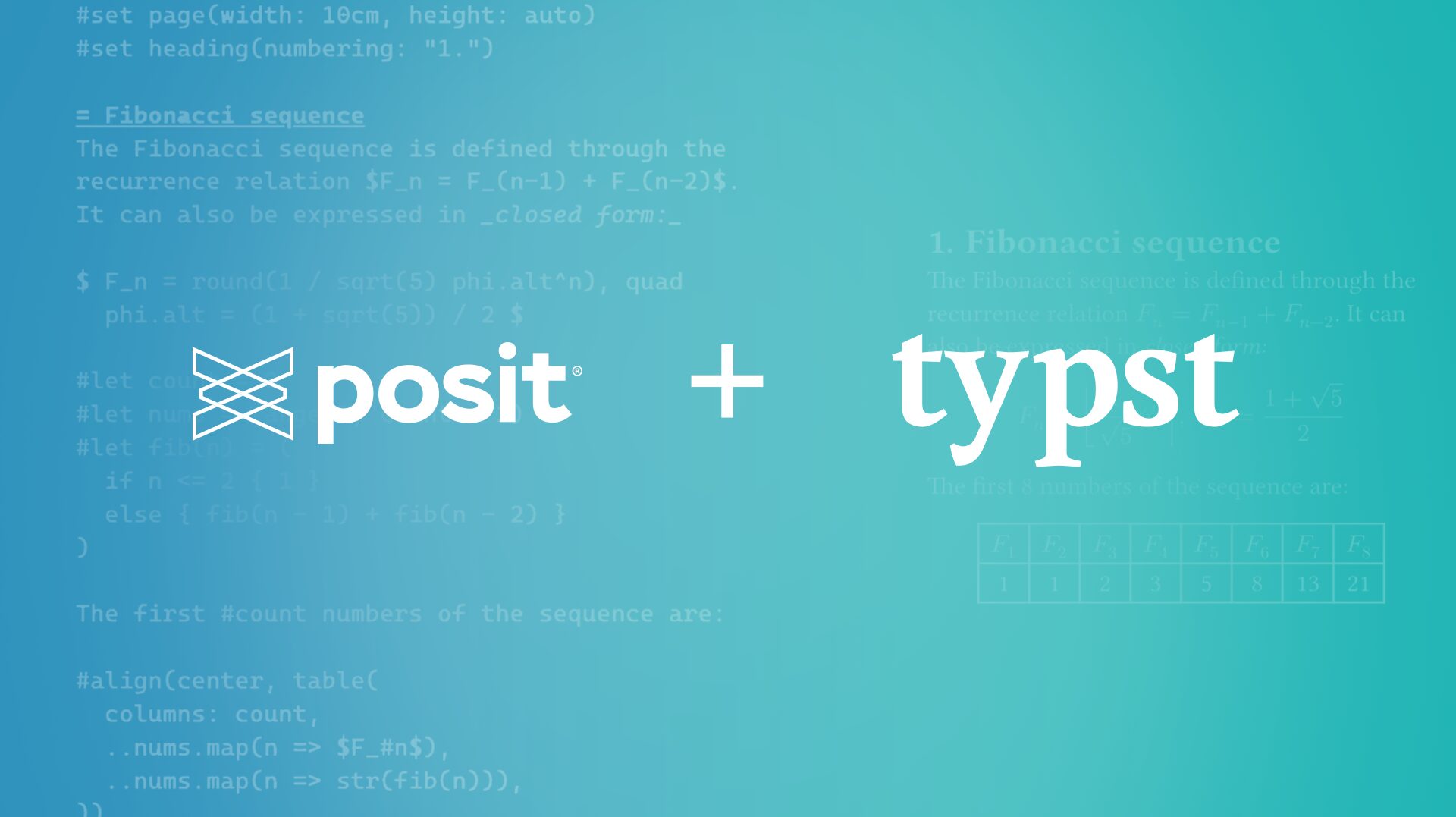Posit and Typst

We’re happy to announce that we’re supporting Typst by funding one of their full-time engineers. This investment reflects our commitment to the tools that make scientific computing and technical communication more accessible and efficient.
What is Typst?
Typst is a typesetting engine that turns plain text documents into PDFs, providing a compelling alternative to LaTeX (something that I never expected to see in my lifetime!). It’s built from the ground up using modern design principles and software engineering best practices, making for a tool that is a delight to use, as well as being very, very fast. It has the power and flexibility needed to generate complex scientific documents, paired with an approachable syntax that doesn’t require years of experience to master.
Why We Love Typst
I polled a few Typst users at Posit to see what we collectively love about it. Here are a few of their responses:
- Clear mental model: Everything you see in a Typst document is the result of function calls. This makes the system remarkably easy to reason about. Want to change how something looks? Simply figure out which function is responsible and modify it—either by setting different default arguments using set rules or by overriding it entirely with custom functions using
showrules. This functional approach eliminates much of the mystery that surrounds LaTeX customization and makes extensions much easier to combine. - Elegantly mix code and prose: Typst makes it trivial to switch between prose and code, enabling you to write your prose in a clean, plain text-like format, while using real functions for more complicated stuff. The seamless mixture of the two makes it easy, for example, to create a figure with a rich text caption without worrying if your prose will accidentally be interpreted as a command. And, if you do make a mistake, Typst’s error messages are excellent.
- Great docs: The Typst documentation has a clear structure, great examples, and thoughtfully color-coded argument types. Take a look at their text stroke documentation to see what we mean.
- Blazing Speed: While LaTeX can take minutes to render complex docs, Typst is remarkably fast, providing near-instant feedback as you work. This responsiveness transforms the writing experience, especially for longer documents.
- Modern typography: Typst includes modern font handling capabilities such as native Unicode support (including emojis!), font-fallback, and all the other text rendering goodness that you expect in 2025.
Typst + Quarto = ♥️
We haven’t just been admiring Typst from the sidelines—we’ve been actively using it in Quarto. We added initial support for Typst as an output format in Quarto 1.4, and have continued to build in new features. In Quarto 1.6, when we introduced brand.yml, we included Typst support, making it easy to bring consistent branding to your PDF reports. We also worked hard to translate CSS to its Typst equivalent, meaning that your beautiful HTML tables are automatically translated.
(Don’t worry, this doesn’t mean we’re dropping support for LaTeX. It’s going to remain important for years to come, so we’ll continue to support it.)
Supporting Open Source Innovation
Posit is a Public Benefit Corporation, and this funding is part of our broader mission to provide “free and open-source software for data science, scientific research, and technical communication”. By investing in Typst’s development, we’re not just improving our own tools—we’re contributing to the entire ecosystem of reproducible research and technical publishing.
Typst represents the kind of thoughtful, user-centered design that we believe the scientific community deserves. By supporting its development, we’re helping ensure that researchers, educators, and technical writers have access to tools that enhance rather than hinder their important work.
